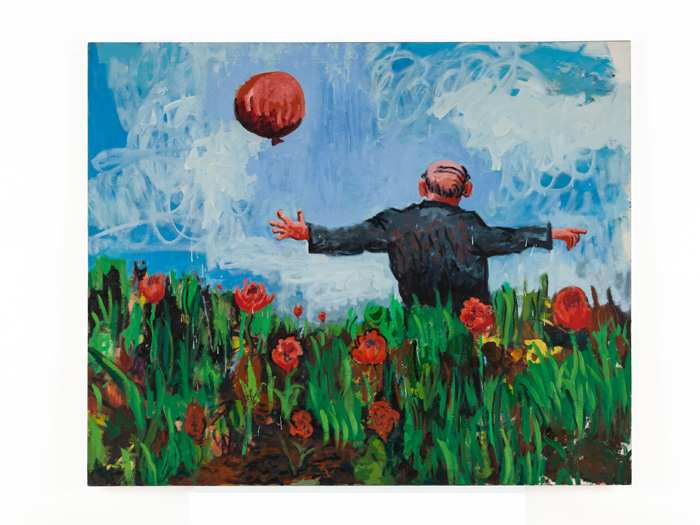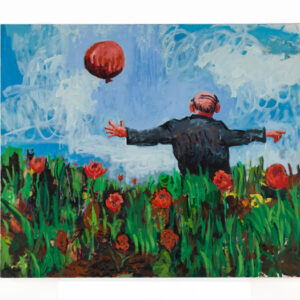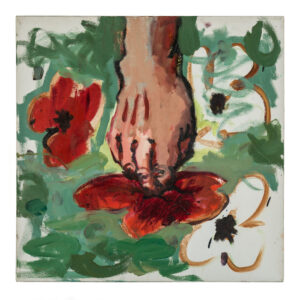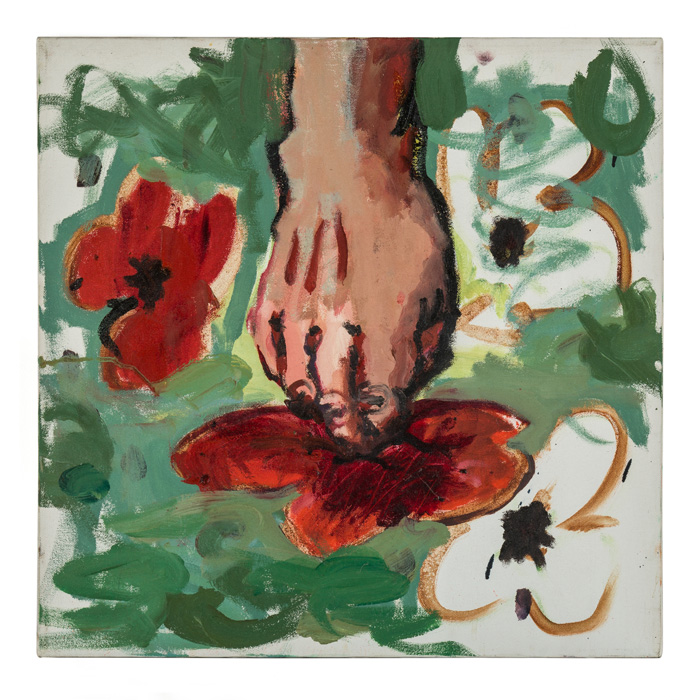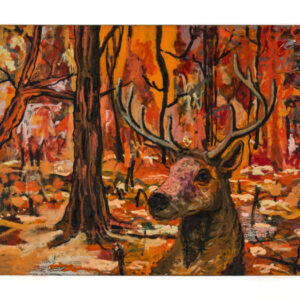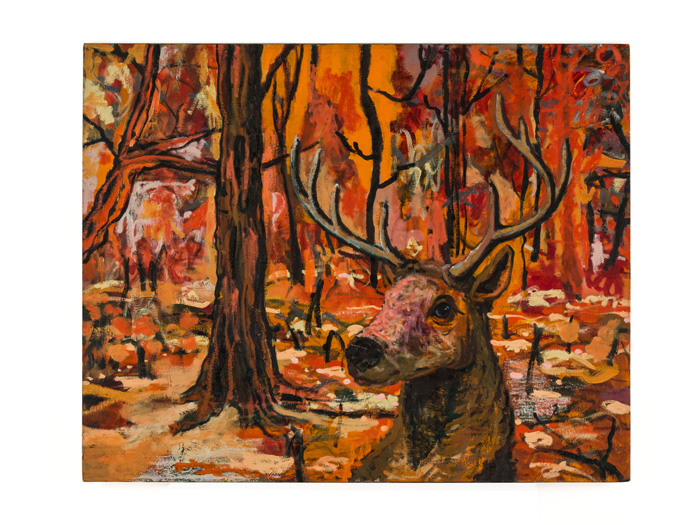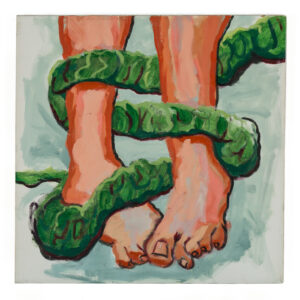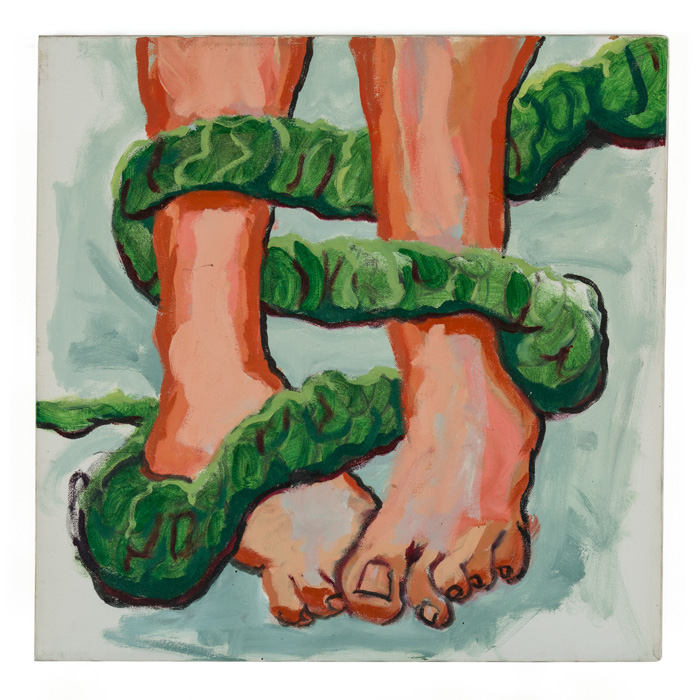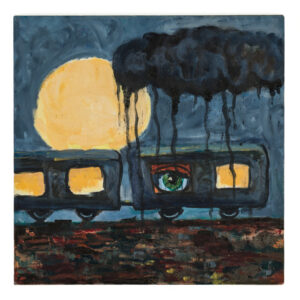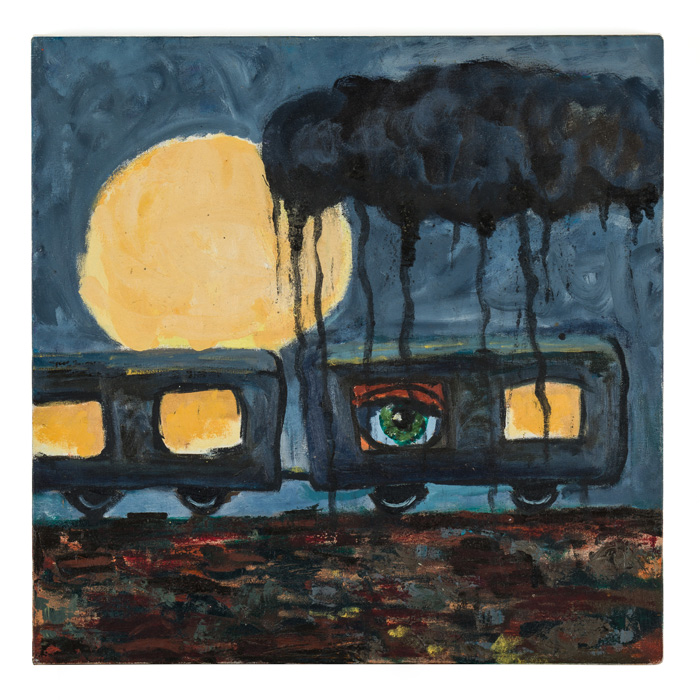Shaken this has left me
And laughing and undone
With a blinding bolt of sleeplessness
That’s just begun
And a windy crazy running
Through the nights and through the days
And a crackling
Of the time burned away
Philip Glass, Lightning
Peter Pacheco is, in a certain sense, an outsider artist. He is no outsider to formal training or art history, but his artistic practice and impressive oeuvre, part of which is exhibited here at the QCC Art Gallery. He has been honed in private, in the evenings and days off from his job as a nurse in an intensive care facility in a public hospital, intentionally outside the gaze of the gallerists, critics, and collectors of the commercial art world in whose company many artists strive to be included. Peter, working in his studio on the top floor of the two-story post-war bungalow he shares with his partner, Avery, has crafted his unique painterly language and vision without regard for art world status.

